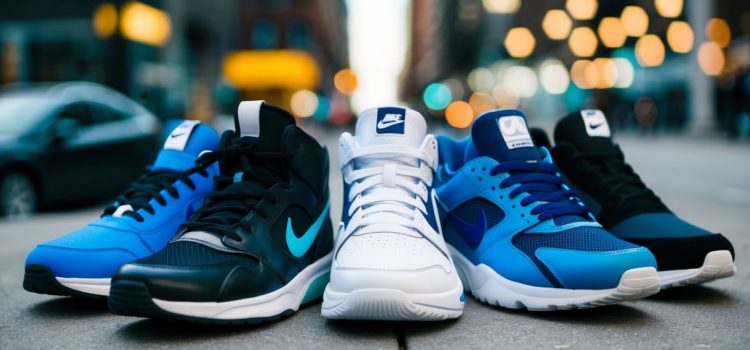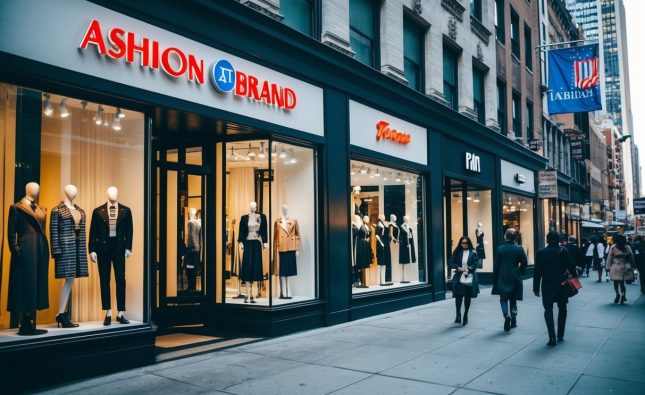
Athletic brands have successfully transitioned from the gym to everyday fashion, making them a staple in casual wear. Many popular athletic brands now offer stylish and comfortable options that fit seamlessly into daily life, ensuring wearers look good while feeling relaxed. This blend of functionality and aesthetic appeal has attracted a diverse audience looking for versatility in their wardrobes.

Shoppers can find a range of choices that cater to various tastes and lifestyles. From sleek leggings and breathable tees to fashionable sneakers, athletic brands provide an array of styles that work well for both active pursuits and leisure activities. For those who prioritize comfort without sacrificing style, these athletic labels are often the go-to for casual dressing.
In a world where casual wear is becoming increasingly important, exploring these athletic brands reveals much about modern fashion trends. Choosing the right pieces from these brands allows individuals to express their personal style while enjoying the practicality that athletic wear offers.
History of Athletic Brands in Casual Fashion

Athletic brands have significantly influenced casual wear since their inception. Their evolution reflects changing consumer preferences and cultural shifts that embraced comfort and functionality in everyday fashion.
Evolution of Sportswear
The journey of athletic brands began in the early 20th century. Founders like Adi Dassler and Phil Knight saw an opportunity to merge performance with style. Starting with simple functional designs, brands like Adidas and Nike produced shoes and apparel primarily for sports.
By the 1970s, the leisurewear trend took off. The rise of jogging as a popular activity paved the way for brands to offer versatile clothing suitable for both exercise and casual outings. These garments, often made from innovative materials, became staples for comfort-driven consumers.
Crossover to Streetwear
The 1980s marked a pivotal crossover between athletic and streetwear cultures. Hip-hop and skateboarding communities embraced sports brands, leading to collaborations that blurred the lines. Companies began to recognize the potential of streetwear aesthetics.
Brands like Puma and Reebok entered this space with partnerships that highlighted urban influences. Graphic tees, baggy silhouettes, and vibrant colors became emblematic of this trend, appealing to a younger demographic seeking self-expression through their fashion choices.
Iconic Campaigns and Endorsements
The success of athletic brands in casual fashion was amplified by strategic marketing campaigns. Iconic endorsements, such as Michael Jordan’s partnership with Nike, revolutionized brand visibility. The “Air Jordan” line became not just a sports shoe but a lifestyle symbol.
These campaigns often featured bold graphics and memorable slogans targeting youth culture. Collaborations with influential celebrities further cemented athletic brands’ status in casual fashion, making them recognizable across diverse demographics. Their ability to adapt messages resonated deeply, maintaining relevance to evolving consumer interests.
Leading Athletic Brands for Casual Wear
Athletic brands have successfully bridged the gap between performance and casual wear, creating versatile collections for everyday use. Key players like Nike, Adidas, Under Armour, and Puma offer distinct styles and innovative designs suited for a variety of lifestyles.
Nike and Its Casual Line
Nike is renowned for its integration of style and functionality in casual wear. Their casual line features items like the Nike Air Max series, which blends comfort with iconic aesthetics. The Nike Sportswear collection includes joggers, t-shirts, and hoodies designed for both performance and leisure.
The brand emphasizes innovative materials such as Dri-FIT technology, ensuring moisture-wicking properties that enhance comfort throughout the day. Collaborations with designers and celebrities frequently refresh their casual offerings, making them appealing to a broad audience. The signature swoosh logo remains a symbol of quality and trendiness in casual fashion.
Adidas’s Lifestyle Collections
Adidas focuses heavily on lifestyle collections that fuse sports and streetwear effectively. The Adidas Originals line is particularly popular, featuring vintage-inspired designs like the Superstar and Stan Smith shoes. These styles are recognized for their casual elegance and versatility, fitting seamlessly into various wardrobes.
The brand has also embraced sustainability, using recycled materials in many of its products. Their clothing collections often combine classic designs with contemporary touches, appealing to a fashion-savvy demographic. The iconic three-stripe logo enhances brand recognition, reinforcing its status in the casual wear market.
Under Armour’s Athleisure Range
Under Armour has carved a niche for itself with a strong athleisure line that merges athletic performance with everyday wear. The brand is known for its UA Rush and UA HOVR technologies, which provide exceptional support and comfort. These lines feature clothing that transitions effortlessly from workout sessions to casual outings.
Their styles prioritize breathable fabrics and a tailored fit, ensuring that wearers feel comfortable whether they are running errands or heading to the gym. Under Armour’s marketing often highlights functional benefits, appealing to consumers who lead active lifestyles while preferring stylish options.
Puma’s Urban Fusion
Puma has gained traction in the urban casual wear scene with collections that emphasize street style. The Puma RS-X series represents this trend by combining retro silhouettes with modern flair. Their clothing collections often feature bold graphics and eye-catching colors, aligning with current fashion trends.
The brand collaborates with celebrities and fashion icons, boosting its appeal among younger consumers. Puma’s focus on innovation includes adaptive materials and designs suitable for both performance and leisure, making it a prominent choice for urban enthusiasts seeking practical yet fashionable gear.
Design and Innovation in Athletic Casual Wear
Innovation plays a crucial role in the evolution of athletic casual wear, as brands integrate advanced technologies and sustainable practices. This focus not only enhances performance but also addresses environmental concerns.
Technological Advancements in Materials
Modern athletic brands prioritize cutting-edge materials designed for comfort and functionality. Innovations like moisture-wicking fabrics keep wearers dry during activities and daily wear.
Key materials include:
- Polyester and Nylon: Lightweight, durable, and resistant to shrinking and stretching.
- Spandex: Provides stretch, ensuring a snug fit without sacrificing comfort.
- Merino Wool: Regulates temperature and resists odor, suitable for various weather conditions.
Additionally, brands are exploring the use of smart textiles that incorporate sensors to track fitness metrics. This integration allows wearers to monitor performance in real-time, enhancing their workout experiences.
Sustainable Practices and Eco-friendly Apparel
Sustainability is increasingly becoming a priority in athletic casual wear. Brands focus on reducing their environmental footprint through eco-friendly materials and manufacturing processes.
Common sustainable practices include:
- Recycled materials: Using plastics and textiles that reduce waste.
- Organic cotton: Avoiding harmful pesticides and chemicals in production.
- Water-efficient processes: Minimizing water usage during production.
By adopting these practices, brands not only appeal to environmentally conscious consumers but also contribute to a more sustainable future. This commitment is evident in many product lines that emphasize eco-friendly designs without compromising on performance or style.












